Understanding Venous Thromboembolism (VTE) during and after Pregnancy

Expectant mothers experience numerous changes in their bodies during pregnancy, including an increased risk of developing venous thromboembolism (VTE). VTE encompasses blood clot formation in the veins, typically affecting the legs (deep vein thrombosis) or lungs (pulmonary embolism). Understanding the risks and taking preventive measures during and after pregnancy is vital to ensure the well-being of both mother and baby.
1. Increased Risk during Pregnancy:
Pregnancy itself is a risk factor for VTE due to hormonal changes, increased blood volume, and reduced blood flow in the legs. Additionally, certain conditions like obesity, advanced maternal age, previous VTE, and family history of blood clotting disorders can further amplify the risk. It is crucial to be aware of these factors and take necessary precautions.
2. Antenatal Preventive Measures:
Your healthcare provider may recommend specific preventive strategies during pregnancy, depending on your individual risk factors. These may include regular physical activity, wearing compression stockings, staying hydrated, and avoiding prolonged periods of sitting or standing. In some cases, anticoagulant medication may be prescribed to lower the risk of blood clot formation.
3. Postpartum Monitoring and Care:
The risk of VTE remains elevated in the postpartum period, especially during the first six weeks after delivery. The body goes through various changes during this time, including the process of the uterus returning to its pre-pregnancy size. It is important to continue preventive measures, such as wearing compression stockings and staying physically active. Your healthcare provider may also recommend extended use of anticoagulant medications in certain high-risk situations.
4. Recognizing Warning Signs:
Being aware of the potential symptoms of VTE is essential for early detection and prompt medical attention. Symptoms can include swelling, pain, warmth, or redness in the leg, shortness of breath, chest pain, coughing up blood, or an increased heart rate. If you experience any of these symptoms, seek medical help immediately.
Venous Thromboembolism is a significant concern for pregnant women and new mothers. By understanding the risks, implementing preventive measures, and staying vigilant for any warning signs, you can help protect your maternal health. Ensure open communication with your healthcare provider throughout your pregnancy and postpartum period to receive appropriate guidance and support. Remember, prioritizing your well-being is essential for a healthy and safe pregnancy journey.
Note: This article is for informational purposes only. It is important to consult with your healthcare provider for personalized advice and guidance regarding VTE prevention and management during and after pregnancy.



